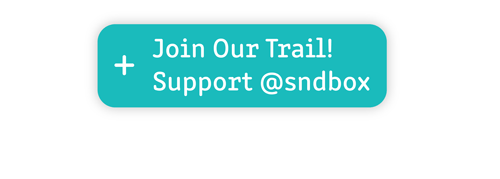
Blockchain is the powerful, yet invisible puppeteer behind cryptocurrency. Digital tokens zip across the globe every second of every day. Due to the nature of this online ecosystem there is no jangling of loose change in pockets. No leather wallets. There are no brick and mortar banks either. Visual cues are hard to come by!
Visualizing “the blockchain” is an interesting challenge to take on. From the perspective of a designer, you could imagine this network of nodes as an artful composition. As tokens are minted and traded from point A to B the composition becomes richer and more complex. The more people who take part in minting and trading the more nuances are entered into the whole equation. Now I know what you’re thinking… we’ll get to CryptoKitties soon, but first, here are a few different examples of composition-making from past to present.
The Art of Mapmaking
After a while, all of the aforementioned A’s to B’s begin to develop a kind of cryptocurrency-map. You can trace each transaction back a generation and discover a progression of growth.
Like blockchain protocols, creating a map is a game of checks and balances. An accidental art through the interpretation of information. Systems evolve playfully as they begin lives of their own. Rules take on new meaning as they assume a unique and visual logic. To put this conversation into some artsy context, let’s take a look at some examples of gamified compositions!
Balance of Rule & Play
Cartography is the practice of map-making. Jerry Gretzinger began his first map back in 1963. He has since become an accidental artist and curiously experimental cartographer. Beginning with a single sheet of paper, his map grew exponentially, spreading from surface to surface and neighborhood to neighborhood. Despite the artistic appearance of Gretzinger’s world, his map-making process has a very structured set of rules. Each move is curated by a somewhat ‘Holy’ deck of cards relabeled with physical attributes and design characteristics. By choosing different cards to 'play’ the world - in turn - morphs, contracts and expands. Gretzinger becomes the translator, a witness as the world unfolds in front of him.
Here is a mesmerizing video documenting Jerry Gretzinger’s lifelong artistic experiment. The mini-documentary is called Mapping the Void, directed by Gregory Whitmore. (Image below sourced via MASSMOCA.)
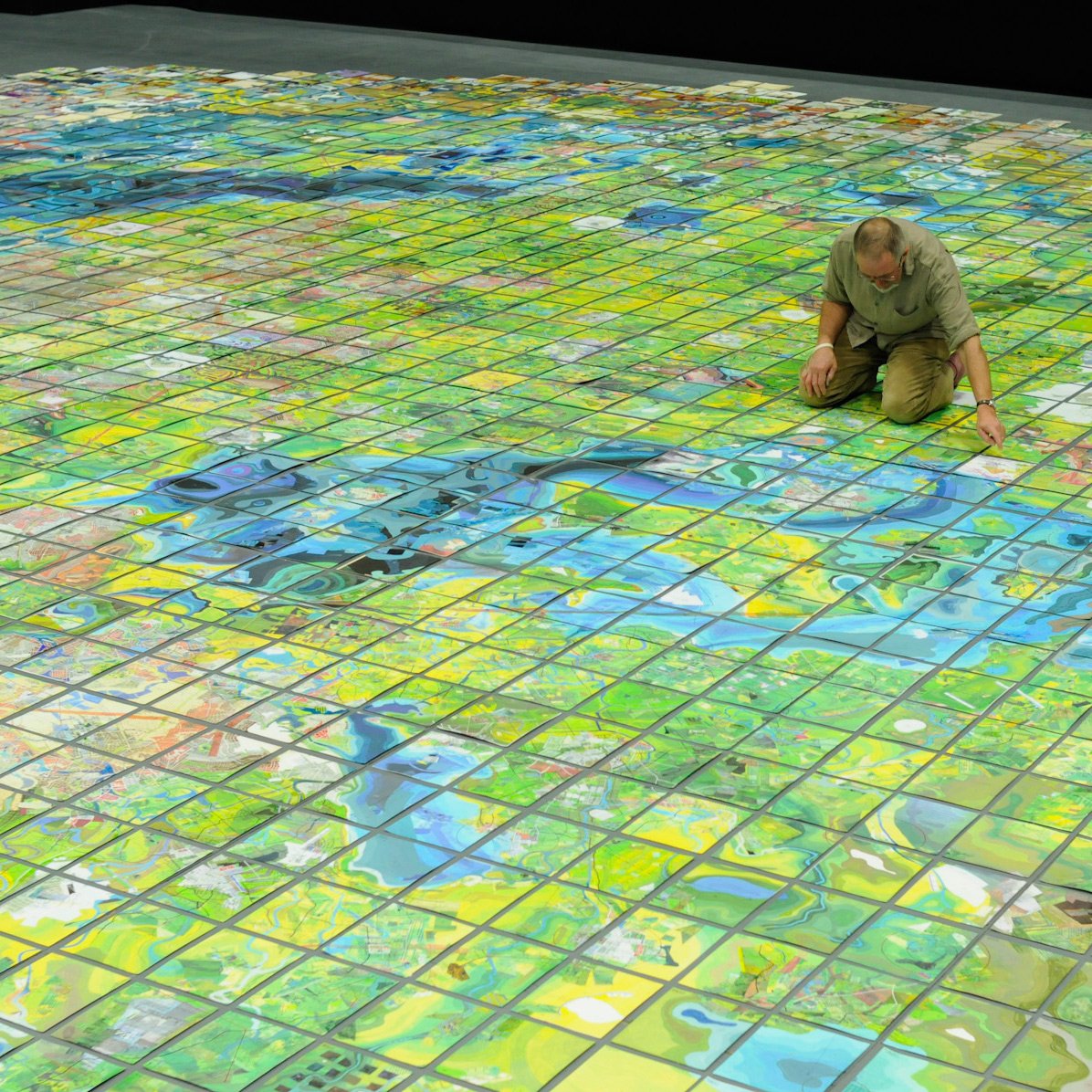
The Void… A “Hardfork?”
A critical feature of Jerry’s world is 'the void’. The void card allows for a dramatic change in landscape, one that no other card provides. Blank white paper invades cities and countrysides, wiping the land clean as it moves along like a clorox wipe. While the first moves of this void are seemingly antiseptic and destructive, the blank paper subsequently provides for greater freedom and new growth. From this tabula rasa emerges a new city.
This void card could also be looked at as a kind of hardforking. (The act of creating a new blockchain generation.) This change in the network is an important part of expansion (both good and bad). Just as the void yields new opportunity for growth - in theory - so do hardforks within the blockchain.
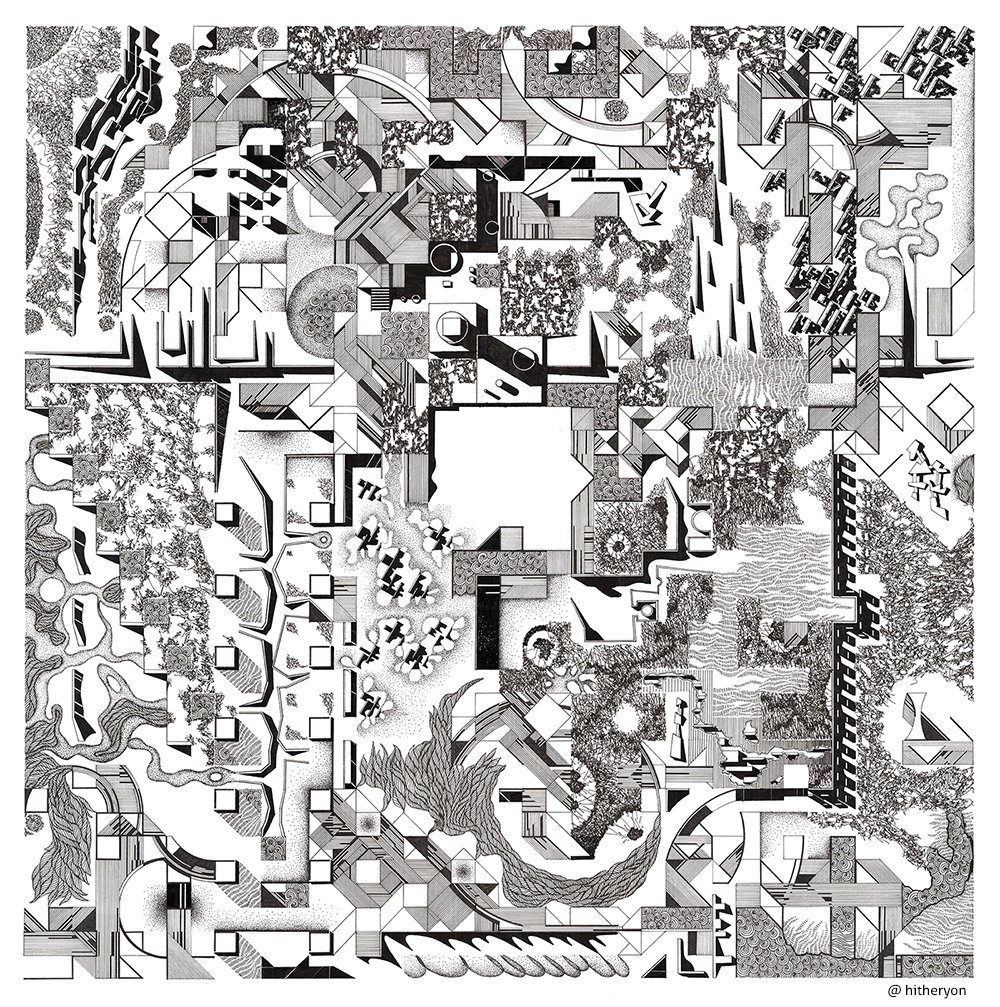
Art of the Id
Prior to @sndbox, our team blogged under @hitheryon - a collective of experimental artists - we adopted a similar strategy to Gretzinger - where the void became a valuable component to each grid-based composition. The four of us Hither Yonians drew exclusively on the same sheet of paper, canvas, mural, even digital model. With four hands acting at once we desperately needed to come up with rules that would help create compositions, not chaotic blobs of pen and ink.
Id (noun) the part of the mind in which innate instinctive impulses and primary processes are manifest.
For our experimental “Id Drawing” series - we used square grids religiously. Each Id drawing began as a blank sheet of paper with perfectly clean pencil grids of various sizes. Acting with the mindsets of architects approaching an empty plot of land, we filled in an equal area of blank space (between 1 and 64 squares, depending on the size of paper.) Once complete we rotated positions. The process was repeated 6 times around, as we developed an overall composition playing off of other's unique styles and ideas.
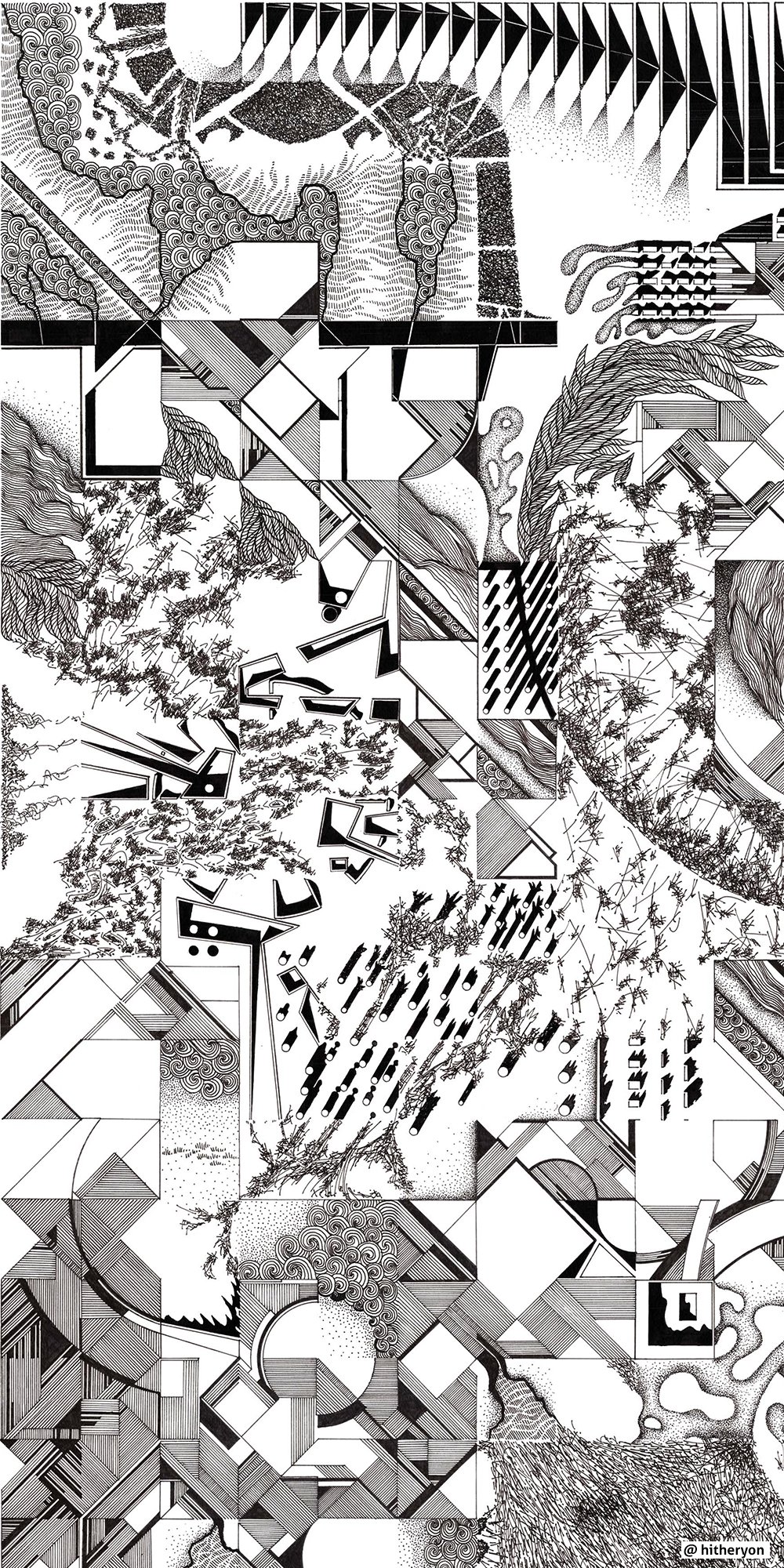
As the paper space was filled in and passed along, an interplay of new thoughts and concepts become realized. The hyper grid-structure provided borders between an individual’s idea and the next participant, but it also provides the ability to connect and expand on a pre-existing theme. With this framework, you have the ability to mediate or ignore, expand or contract, allowing the drawing to become a dynamic commentary imbued with pen and ink.
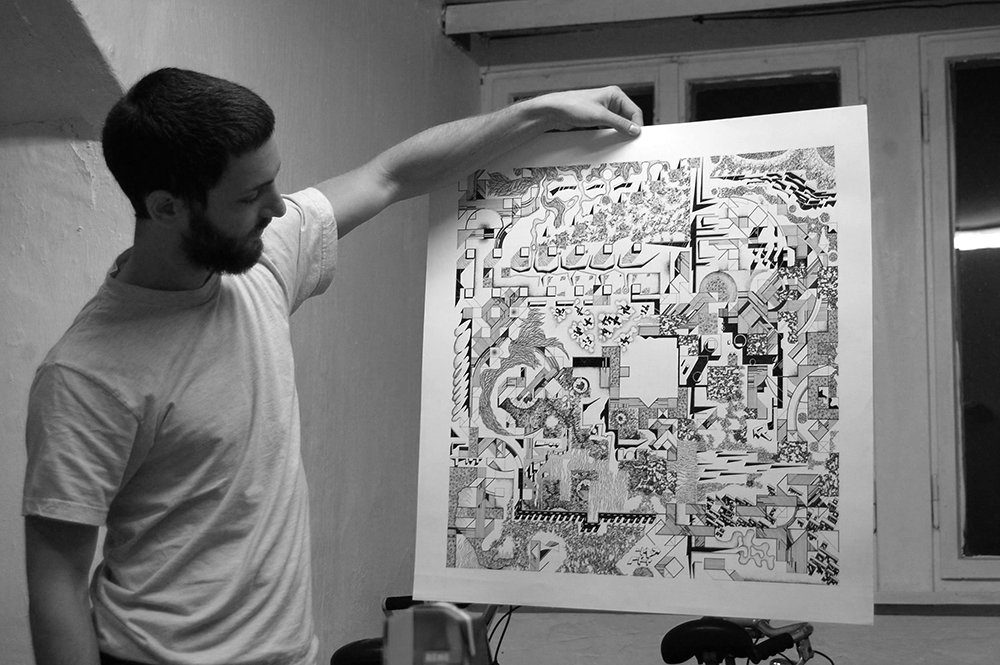
Blockchain Wayfinding…
@steempixels is a beautiful example of blockchain visualization. Through Steem, @boxxa and @adept created “the world's first blockchain powered decentralized collaborative pixel canvas.” With Steem, you can buy a pixel and color it whatever you like. Cumulatively, your computer screen becomes a massive crowdsourced work of art.
The Internet’s Purrrfect Storm...
Over the weekend, we discovered CryptoKitties. (A big thanks to @prufarchy for the introduction!) CryptoKitties is a great example of visualizing identity and process on the blockchain. These collectible critters carry unique traits drawn from their digital ETH address and lineage. In the words of our friend Pruf…
“They're furry, they're colorful, they're... purely digital. Oh, and they can breed unique offspring, all via smart contract on the Ethereum Network.” (Original post.)
Compositionally, this is a beautiful project that helps people visualize the progression and propagation of a blockchain network. Each kitty is unique but also carries visual traits drawn from parents and grandparents.
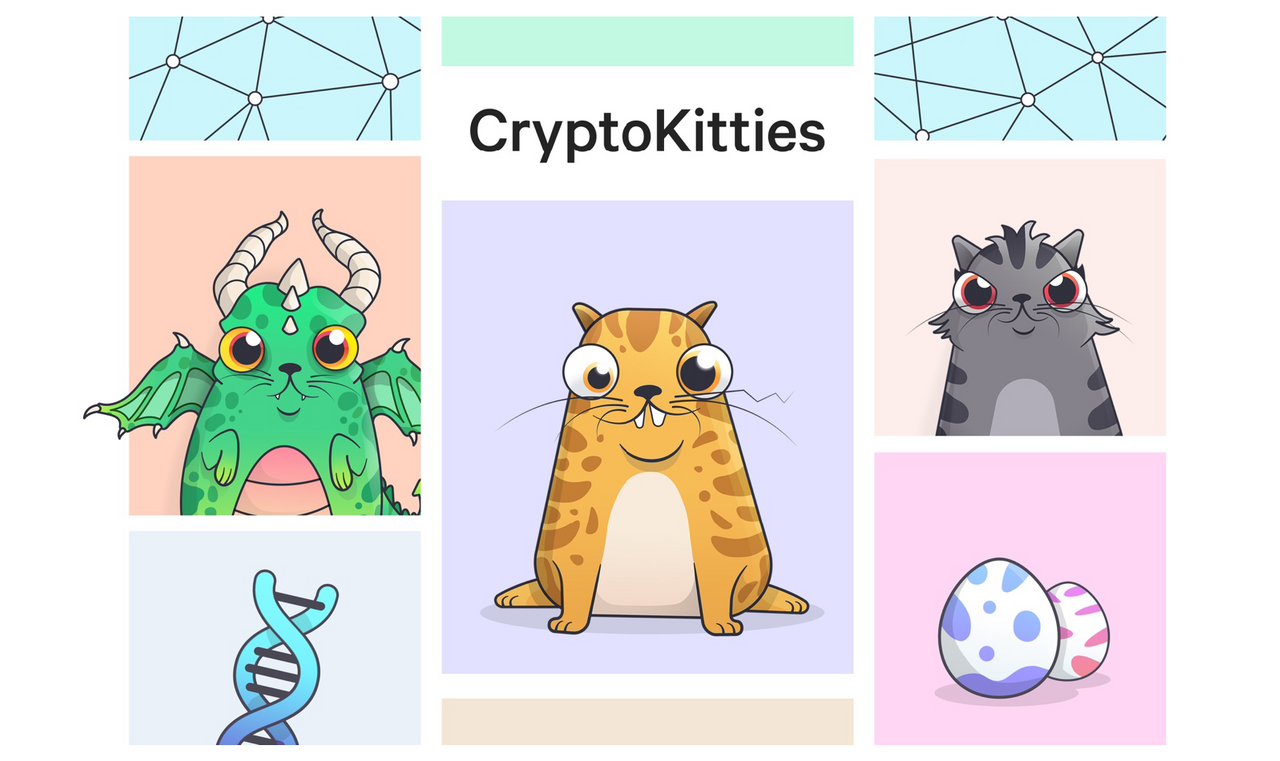
Through fun and artful projects like these, people will begin to learn more about cryptocurrency and blockchain DNA. But they’re also more than just fun collectibles! As we’ve also learned, large-scale gamified projects can challenge the integrity of a blockchain’s composition. Ethereum has been absolutely overwhelmed by transactions since the beginning of CryptoKitties nearly one week ago. The inability of ETH to handle the workload of an online game has kickstarted a huge conversation surrounding blockchain scalability.
Gamified composition can teach us all a lot about what works and what fails. Playful (and accessible) exercises in visualizing blockchains will help us learn more about the cryptocurrency ecosystem. So explore, challenge, test, collect and play on!
Want to support Steemit content like this? Consider joining our curation trail! You can learn more about the @sndbox incubator mission here.



